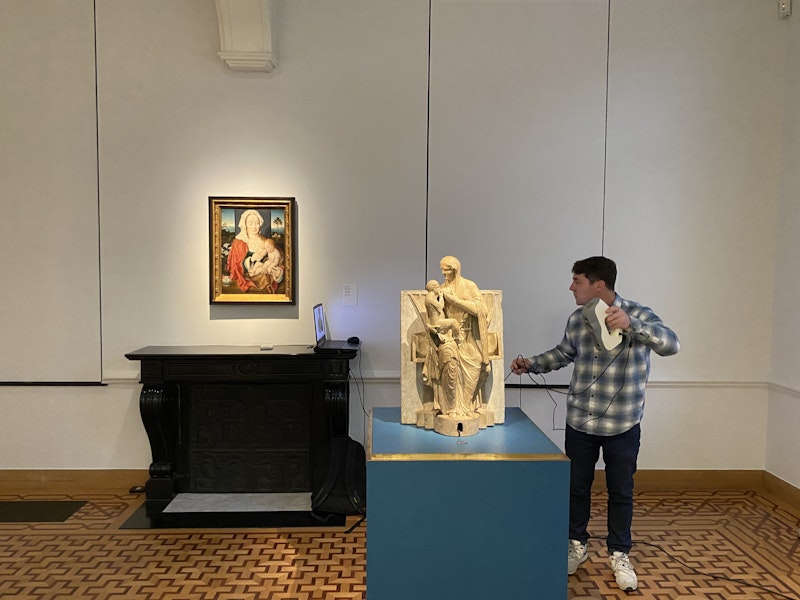
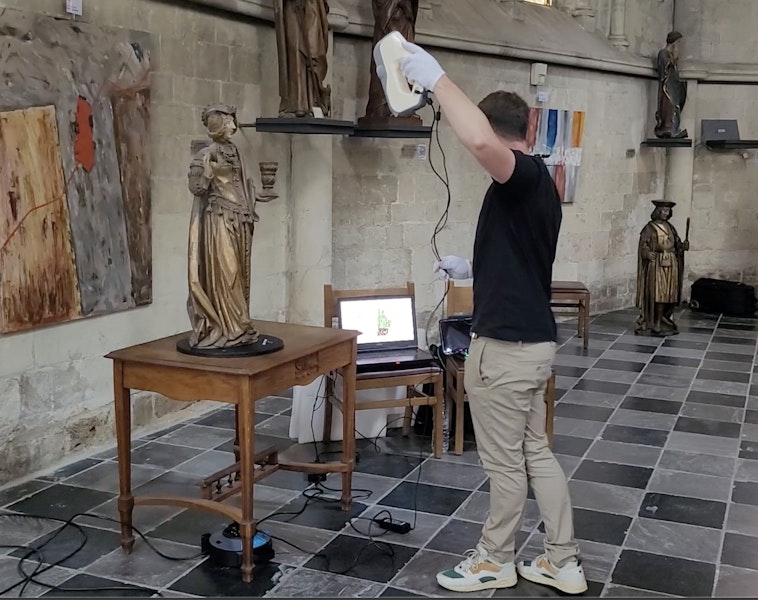
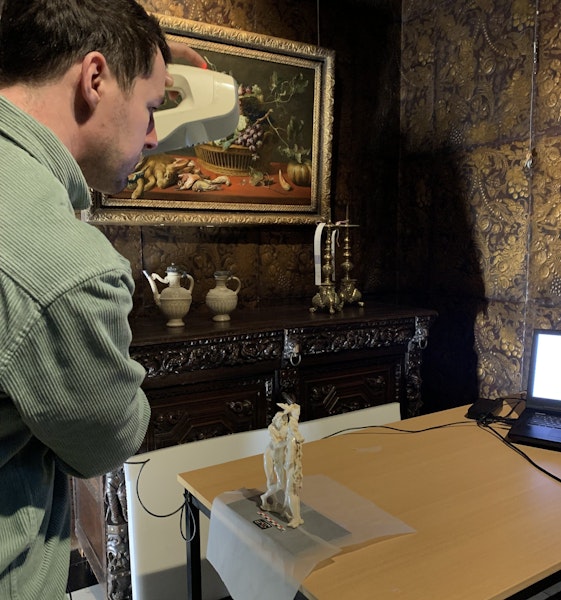
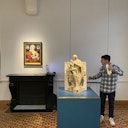
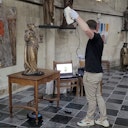
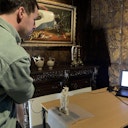
The GIVE-project is a digitisation effort of impressive proportions: over 800.000 newspaper pages, masterpieces and glass plate photographs were digitised and sustainably preserved. With the help of artificial intelligence, over 130 collections with audio and video received more accurate descriptions, making them more searchable.
Impressive results, but the project also initiated intensive cooperation between heritage organisations, experts, technical professionals and more. In this article, we put the spotlight on the people behind the project. This time, we asked our 10 questions to Frederik De Kreyger, Archeologist – responsible for 3D scanning and visualization at Erfgo3D.
Please can you tell us about your involvement in the GIVE project and your specific role?
I work for Erfgo3D, and think our name neatly encapsulates what we do: we digitise archaeological and heritage artefacts through 3D capture. In the GIVE project, we were responsible for the 3D digitisation of the Flemish masterpieces by 3D scanning. I was the point of contact for meemoo, and I also digitised quite a number of objects myself.
Why do you think digitising the masterpieces is so important and valuable?
Even though 3D digitisation has been around for a few years, it’s not yet been widely adopted within the Flemish museum world. But a 3D model opens up a whole new world of possibilities because it really is a digital twin of the original.What impact do you hope the GIVE project will have?
I hope that museum institutions will discover the power and benefits of 3D digitisation through this project. I believe the end product can provide real added value – both for their own operations and especially for exhibitions. It’s really fascinating for visitors to explore all facets of an object through these 3D representations.
What challenges did you encounter in your work on the project, and how did you deal with them?
Each object is unique and has its own specific ways of being turned into a 3D model. One of the biggest challenges was the scanning session in the church of Tongerlo-Bree. We were assured that the statue could be easily scanned. But when we arrived, we found the massive wooden statue, weighing over 150 kilograms, perched on a pedestal two metres high. We eventually managed to create a good 3D model of the statue with the help of a ladder, however.
What have you learned or discovered during this project?
That Flanders has far more masterpieces than I ever imagined! And these masterpieces really are spread all across Flanders. In my humble opinion, they deserve much more attention and appreciation.
Which collaborations within the project have made the biggest impression on you, and why?
I was very impressed by the professionalism and enthusiasm of the partners involved, both from meemoo and the institutions that manage the masterpieces and are making them available for digitisation. People were really willing to go the extra mile. In Kortrijk, for example, the 8PP kg heavy statue of Saint Catherine had just been restored, ready to be placed on a permanent pedestal. But after some intensive discussions between the restoration team, the church, meemoo and the art handlers, they made some time available for us so we could scan the statue at ground level.
What is your favourite masterpiece and why?
I don’t have an absolute favourite masterpiece, but the numerous statues and paintings from the collection at Saint Leonard’s Church in Zoutleeuw really capture the imagination. Each one is a real gem.
Which masterpiece do you think definitely still needs to be digitised, and why?
For me, all masterpieces deserve the same level of recognition and treatment. It would be demeaning to the works not mentioned here if I were to single out just one. So my diplomatic answer is: all masterpieces.
Who do you think benefits the most or is most impacted by the digitisation of heritage objects?
My hope is that this digitisation will make the art experience more accessible, particularly for the younger generation, and therefore broaden the base of support for the heritage sector as a whole.
Based on your personal experience and expertise, what recommendations would you make to someone who wants to work on a similar project in the future?
Go for it! I’ve met lots of interesting people and encountered fascinating works through this project, and learned a great deal in various areas. It was also heartening to meet so many heritage enthusiasts who all perform their jobs with passion every day.



